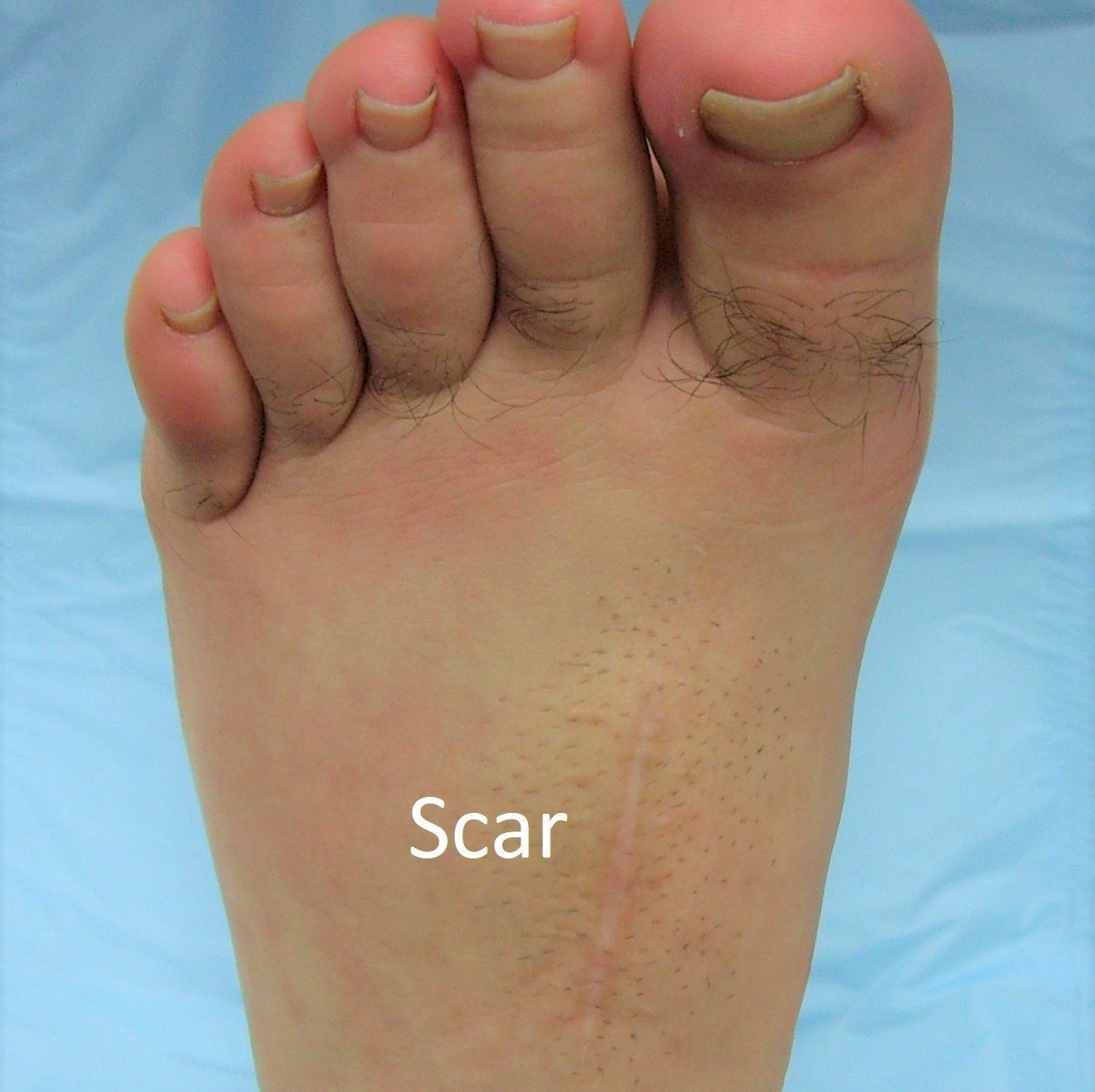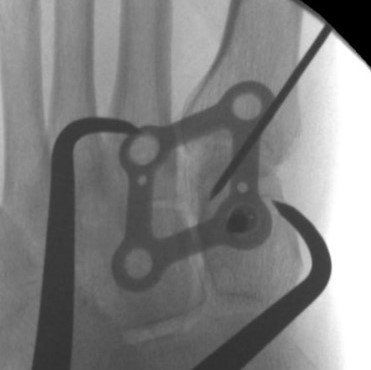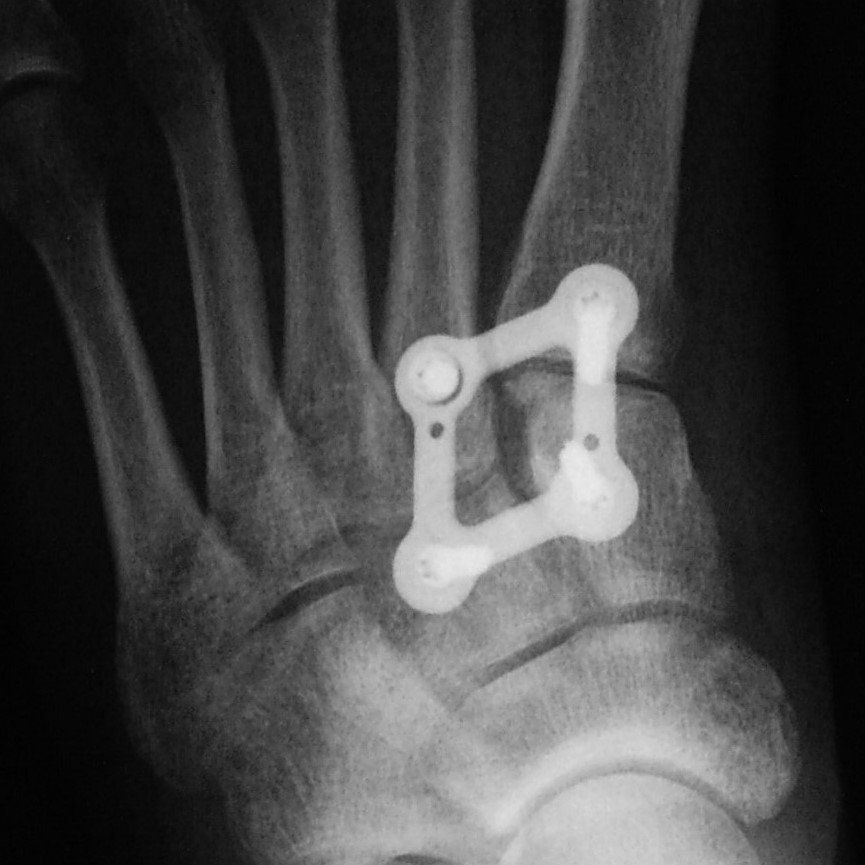Lisfranc Stabilisation
Surgical Treatments for Unstable Lisfranc Midfoot Injury
Before reading this page, please see Lisfranc Midfoot Injury under the FOOT menu for more information.
There are two surgical treatments for an unstable Lisfranc midfoot injury:
- Lisfranc stabilisation (see images)
- midfoot fusion (see Midfoot and Hindfoot Fusion for more information).
Most people undergo Lisfranc stabilisation.
Fusion is required for injuries with severe joint damage and pre-existing arthritis.
Lisfranc Stabilisation
This surgical procedure involves reducing the midfoot joints and holding them stable until healing occurs.
Strong suture material (Arthrex Lisfranc Internal Brace) or a plate and screws is inserted. The pattern of injury determines what is used.
Plate fixation is stronger than suture fixation but requires plate removal 4 to 6 months after insertion.
Surgery:
- is Day Surgery or a one night stay in hospital
- requires a general anaesthetic in most people
- takes 30 to 45 minutes.
First 2 weeks:
- bandage
- post-op shoe or "moon-boot"
- touch weight bearing on the heel only
- crutches or frame
- rest, elevation and ice (RICE)
- ankle and foot movements
- post-operative appointment.
Next 4 weeks:
- sports shoe or "moon-boot"
- crutches
- RICE as needed
- exercise bike and pool-based activities
- post-operative appointment +/- X-rays.
Next 3 months:
- shoes with insoles or orthotics
- physiotherapy-guided rehab program
- return to sports specific training.
4 to 6 months after surgery:
- removal of plate (Day Surgery).
Benefits and risks:
- most people are helped by this surgery
- final recovery takes 18 months in severe injury
- midfoot osteo-arthritis can develop even after Lisfranc stabilisation.
Consequences and complications:
- driving restrictions (2 to 8 weeks)
- numbness between the big and second toe is common after surgery
- midfoot swelling and stiffness is usually present until the plate and screws are removed
- see General Information about Surgery.
IMPORTANT
If you have any questions about your planned procedure, contact Dr Beamond before the day of surgery.
The information on this page is of a general nature and does not replace the informed consent process. Other consequences and risks specific (material) to the individual must be discussed prior to surgery.

















